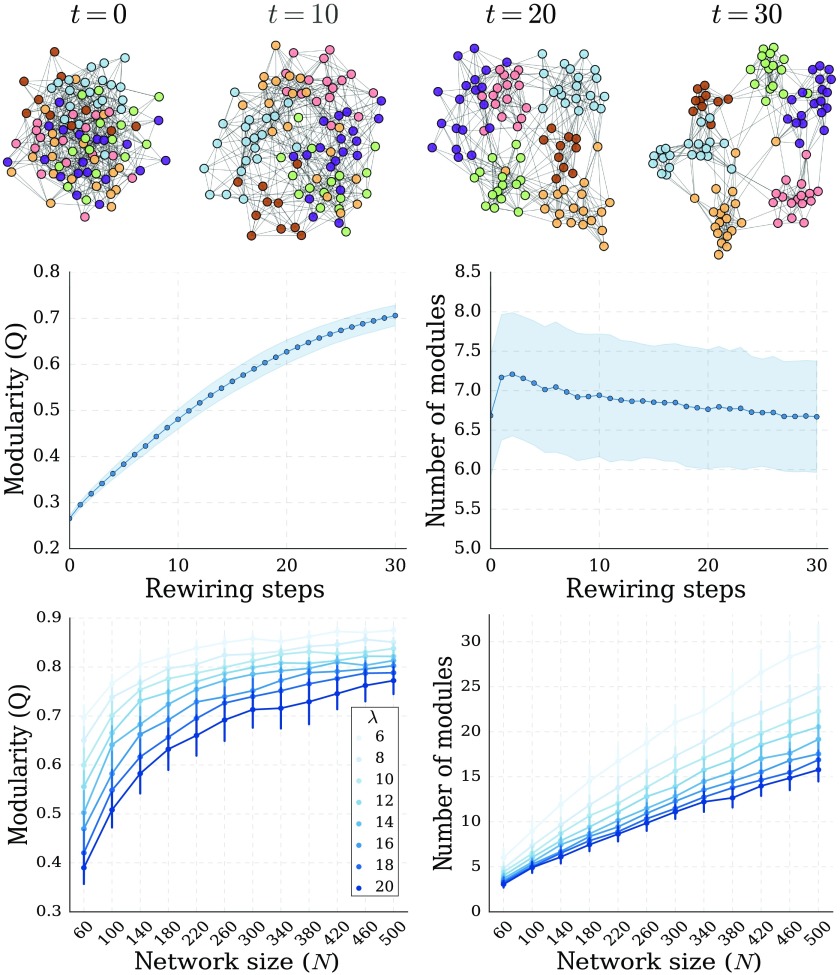Figure 1. .
Emergence of modular network organization from topological reinforcement. (Top) Example of network evolution resulting from topological reinforcement, starting from a random network. Layouts are generated according to the Fruchterman-Reingold force-directed algorithm. Nodes are consistently colored according to the final modular structure. At each rewiring step (t), a total of N links where reallocated. (Middle) Evolution of the modularity (Q) and number of modules as a function of the number of rewiring steps (mean and standard deviation across 500 simulation runs). (Bottom) Final modularity (left) and number of modules detected (right) for different network sizes (N) and densities (λ, average number of links per node) (mean and standard deviation across 50 independent graph realizations).

